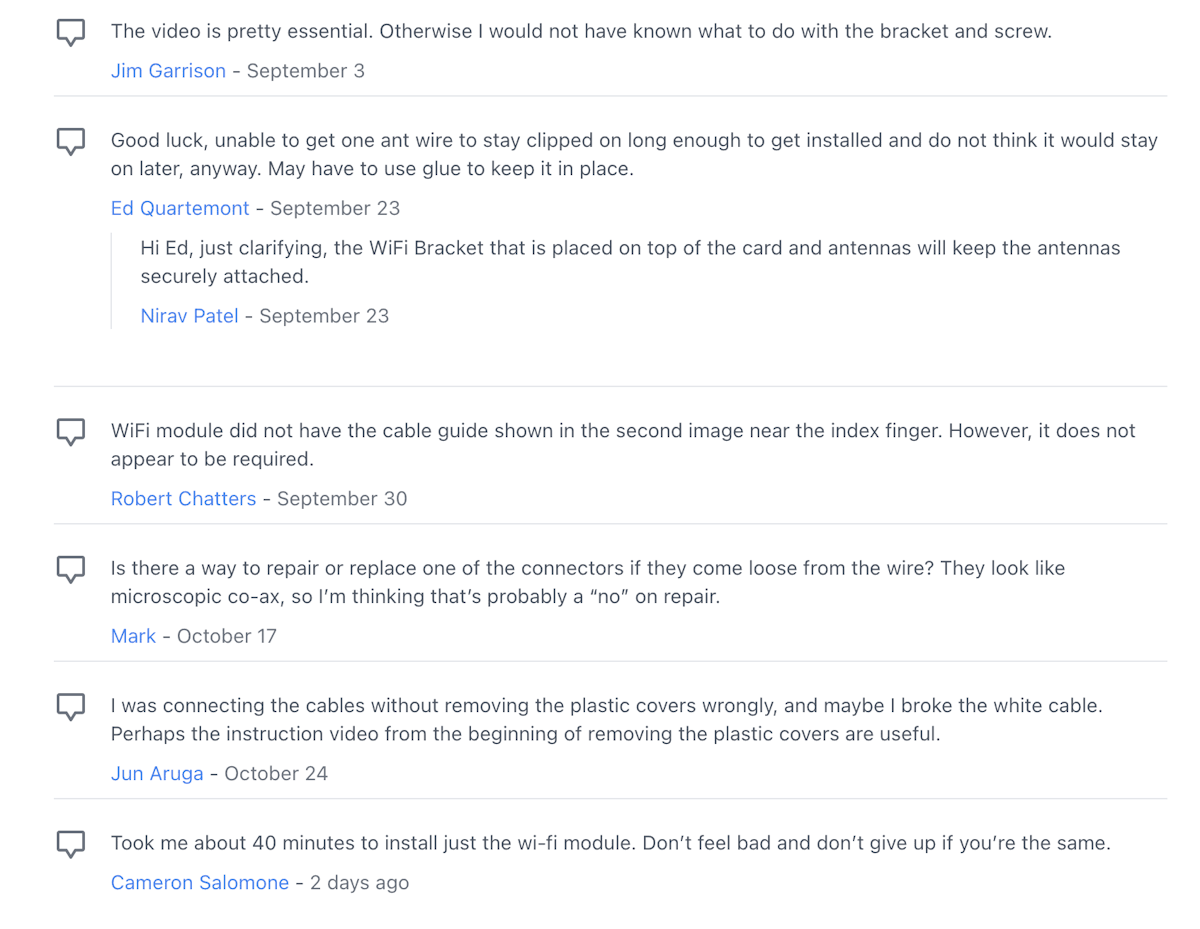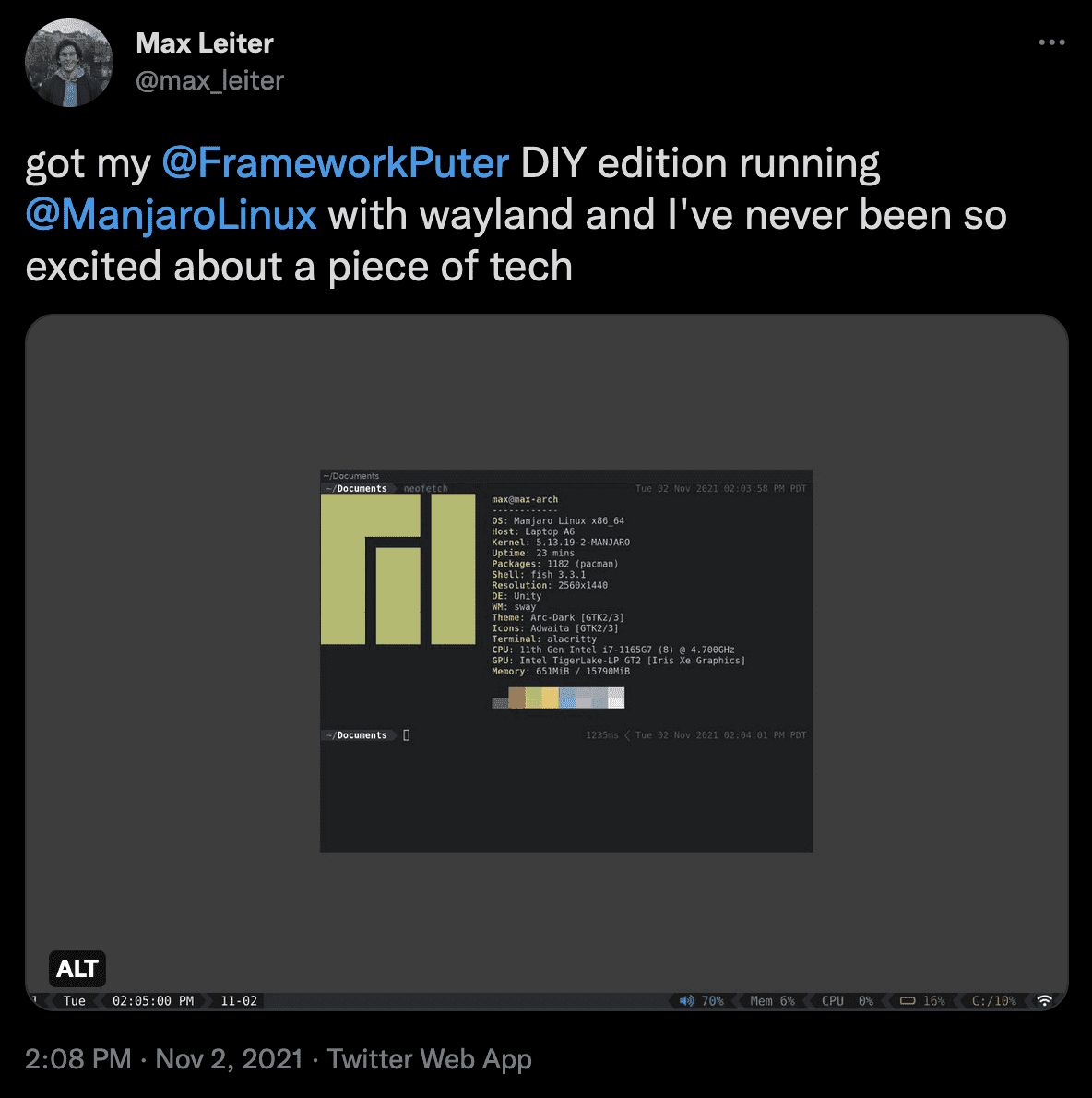Nov 3, 2021
Impressions of the Framework Laptop
My thoughts on the Framework Laptop's hardware
I received my Framework Laptop DIY edition a few days ago and have been setting it up software-wise. I have it running Manjaro Linux with the Sway window manager. This is my first time using a Wayland desktop, and oh has it been a learning experience. This post will be largely about the hardware, but I plan to make one about the software once I'm more happy with my setup.
Here's what I got:
- Framework Laptop DIY Edition
- 16GB (2 x 8GB) DDR4-3200
- Intel® Wi-Fi 6E AX210 No vPro
- 1TB - WD_BLACK™ SN850 NVMe™
- USB-A Expansion Card
- USB-C Expansion Card x2
- HDMI Expansion Card
I bought everything from the Framework store (at a slight markup of ~$80 for the RAM, SSD, and wifi card), but I'm happy to support them and for the convenience of knowing it would work properly was well worth it.
The Good
- Well crafted body. I was not expecting a premium build quality from a startup trying to create an upgradeable laptop, but wow they excelled.
- It's really light. It's just 2.8 pounds, compared to my 13" Macbook Pro's 3.02. You wouldn't think that's a big difference, and maybe you wouldn't notice, but I sure did.
- A solid keyboard. Most non-Mac laptops I've tried have awful keyboards. It's not as rigid as an Apple non-butterfly board, but it's close. Definitly usable.
- Modular expansion ports (via pass-through to USB-C) are a fantastic idea. I can't wait for 3rd party ones to be released.
- Hardware switches for the camera and microphone.
- Beautiful glossy screen. I haven't used it extensively outside, but it's worked well enough for me (especially at full brightness).
The Bad
- There are only 3 preset levels of keyboard backlight you can switch between: off, on, and half. Perhaps my Mac spoiled me, but I'm used to having more fine-tuned control over it.
- Installing the wifi card was difficult. It took me twice as long to install the WiFi as it did to setup the rest of the computer. They acknowledge this in their installation instructions, but othes seem to also be having problems:

- Removing expansion ports requires far more force than installing them. Feels a little awkward.
- 12 seconds of pressing the power button to hard reboot. Not that big of a deal, but definitely feels way too long.
- Why does the screen need to swing open 185°?
The Ugly
- This isn't necessarily due to the hardware, but the battery life on Linux currently requires a little finessing to be reasonable. I'm sitting at ~4h of moderate use after tweaking numerous configs and following multiple different sets of instructions from around the internet. This isn't good enough for me to take on campus for class, but it's great for doing work around the house.
- Lacks the ability to set charging thresholds. It's being worked on, but at the moment it doesn't seem possible.
- A strange 2256x1504 resolution. Why couldn't they have chosen something more standard? Although I think my issues with this are mostly due to Linux / Wayland. Maybe I'll get used to 3:2.
- It requires a little extra care to open the laptop without sliding it (perhaps due to its light weight).
In conclusion
I'll let my Tweet from a few days ago sum it up:
